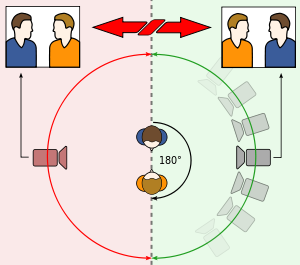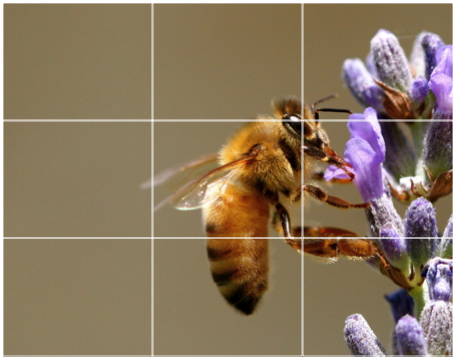The editing used within a thriller film all depends on what concept you are trying to potray. Different types of shots you want to create, can be made by using different techniques such as, if you wanted to show that time was passing on you would use dissolve, which is where one shot fades into another. If you wanted to show a fight scene taking place or give of a 'montage effect', which could suggest a chaotic scene taking place, you could use a faded out to black screen or a fade from black to white. This technique is very useful as you could cut the scene at one point, and start the scene again but futher on than the storyline should be, this therefore, speads up time and gives that little sense of mystery to the reader as to what was happening in that cut scene. Another effect you could use would be a jump cut, which is an abrupt cut between two shots, this is effective as it could suggest drama beggining. Another example is a cross-cutting effect which is used for action shots as it contracts between two storylines or settings. This effect is used in the film Quantum of Solace, which is an action thriller. By using a fast arrangment of camera shots and editing skills the tension increases and the drama really starts to unfold, leaving the audience to ponder on the ending. There can also be non-digetic sound that can be added to the film when it is being edited to create an atmosphere for the film, if the music is a happy vibe it sets a positive sense to the film. However, if the music is eerie and mysterious it sets of a endeering vibe and creates tension for the reader. This is the technique my group wants to potray when making our thriller opening.
Camera:
Different type of camera shots are used within a thriller however, some are more important than others to potray a certain image.
A low angle shot is taken from below the subject, looking up at it. This gives the subject a sense of power and authority and puts the viewer in a vunerable and inferior postition.
A high angled shot is taken from above the subject, looking down at it. This gives the subject a lack of power and puts the veiwer in a position of power and authority.
Another commonly used shot is point of view shot. This shot is used to show either the victim or the attackers point of view, it is usually shown in a way that it is obvious to the viewe,r who's point of view it is from. When it is used from the attackers point of view, it usually shows the victim and him watching her from a distance.
Alot of close up shots are used. The shots are mainly of the subjects face, for showing precise or specific detail. It is also used to show characters emotions, feelings or pesonal space.
The 180 degree rule is essential.

This stops confussion to the reader, and keeps characters on either the right or left without switching over. If the rule was broken the characters would constantly be switching sides, confusing the reader as to why it looked as if there constantly swapping places, and who was the person speaking.
The rule of thirds should also be considered when filming as to give a more intersting shot. This is because if you put the the character right in the middle of a shot, all of the screen space would be taken up. However, if the character was placed to one side more than the other, being left or right, it allows the veiwer to see the whole picture, the surroundings of the character, and enables the audience to set a scene.

Mise-en-scene:
The mise-en-scene of a film basically means everything that is put into the shot or frame of the scene. The mise-en-scene location is where exactly the film is set. This is important as the setting tells the time of the scene being past/present/future. The location is also important as if your scene is placed somewhere completely out of the ordinary to the theme of your thriller, this will cause great confussion to the reader. The mise-en-scene costume is vital also as costume and make-up can suggest a role of the character in the film, age of the character, personal status and time period the film was meant to be set. Mise-en-scene props are also essential as they can be objects that relate to the story or action taking place e.g. if a fight scene was taking place a gun could be an essential object to show the character needs protection from the situation he finds himself in. Props can also show the time or setting of a film, and may give the reader extra cruical information about a character or period of time. Mise-en-scene lighting can create a certain atmosphere and highlight certain objects or actions that show great importance to the story that is taking place. However, lighting can create lots of problems sometimes when filming.
Narrative:
In the beginning of a thriller opening is the where you would normally hear a narrative. The narrative could be played above sound, or on its own. It can sometimes be a third party telling the audience what is occuring within the story, or it could be the characters voice over telling the story from there point of view, or even it could be the audience hearing the characters thoughts and feelings. If more than one character is in the first scene and neither has spoke before the voice over begins, it could confuse the reader as to which characters voice you can hear, this needs to be considered when filming certain scenes.
In our thriller opening, we will be having a voice over of the attackers thoughts about his victim. We will not need to worry about confussion to the reader as the only characters in our thriller opening will be the attacker being a man, and the victim being a women.
No comments:
Post a Comment